The Georgia state’s comprehensive summative assessment program, called the Georgia Milestones Assessment System or GMAS, assesses students in grades 3-12 over the state-adopted standards in mathematics, English Language Arts, science, and social studies.
End-of-Grade and End-of-Course Exams
End-of-grade assessments are administered to students in grades 3 through 8 in English Language Arts and mathematics. Additionally, students are assessed in social studies and science in grades 5 and 8.
High school students are required to take end-of-course exams for each of the following ten courses selected by the Georgia State Board of Education:
End-of-course assessments are given upon the student’s completion of the course, serving as the final exam of the course and contributing 20% to the student’s final grade in the course.
The GMAS assessments are designed to set higher expectations for proficiency for students than past assessments, better preparing students for college and career.
Understanding the Individual Student Report (ISR)
The Individual Student Report is divided into 9 sections.
Section 1
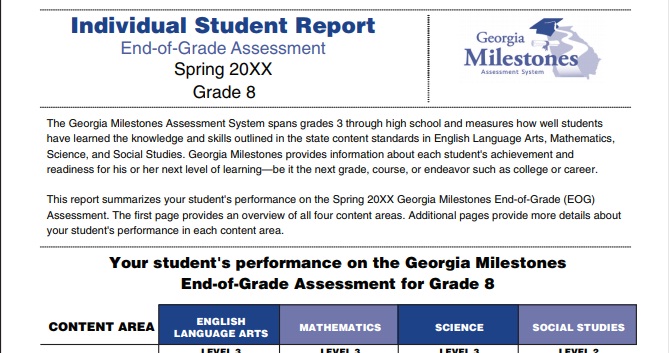
Section One shows the demographic information and the Content Area the student was assessed in.
Section 2
The Achievement Level shows the student’s level of achievement on each assessment taken using bar stacks.

There are four categories of achievement:
Beginning Learner – Student does not yet demonstrate proficiency.
Developing Learner – Student demonstrates partial proficiency.
Proficient Learner – Student demonstrates proficiency.
Distinguished Learner – Student demonstrates advanced proficiency.
Section 3

Section three reports the student’s Scale Score for each assessment taken. This score is calculated by taking the total number of correct answers and converting it to a consistent and standardized scale across different test forms. The four levels of achievement fall within each range of scores. These ranges vary from subject to subject and grade to grade, depending on the actual test.
Section 4
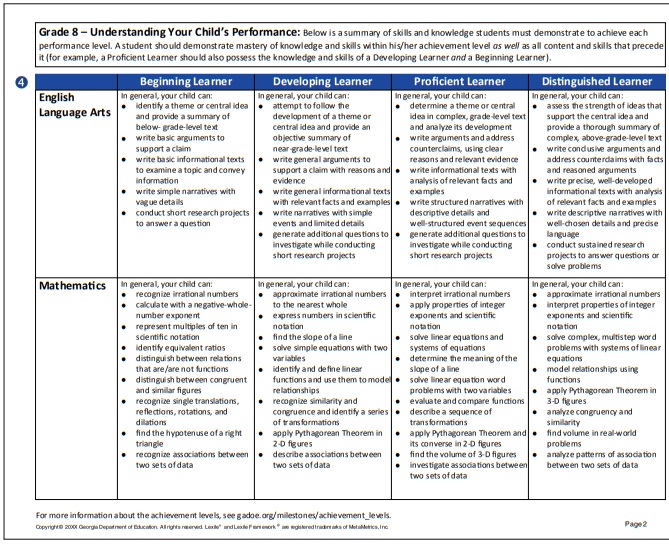
In this section, brief descriptions of all four Georgia Milestones achievement levels are provided
to allow students and parents to know the full continuum of expectations.
Section 5
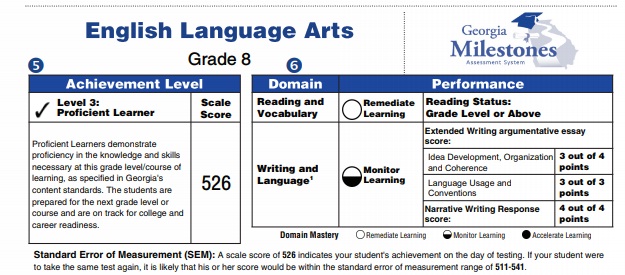
Section five talks about the students achievement level score
Section 6
This section goes into more detail on the student’s performance in the different categories. This portion is very important since it gives insights into student areas of strength and weakness, thereby giving input on focus areas.
Section 7

Section seven includes a Comparison chart showing ranges for each achievement level and how the student’s score compares to averages for the school, district, and state.
Section 8
This section compares student performance to a national sample of students.
Section 9
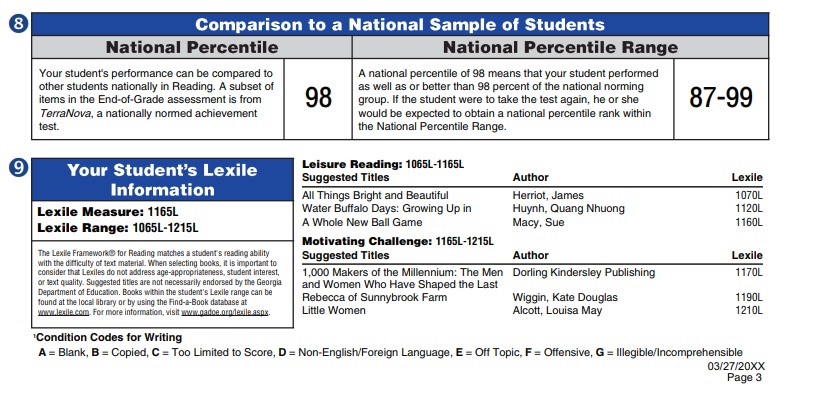
This section details the student’s Lexile Information, which measures the student’s reading ability. This section is helpful because it gives suggested reading titles based upon the student’s Lexile score. This section is applicable only for ELA.
Math report
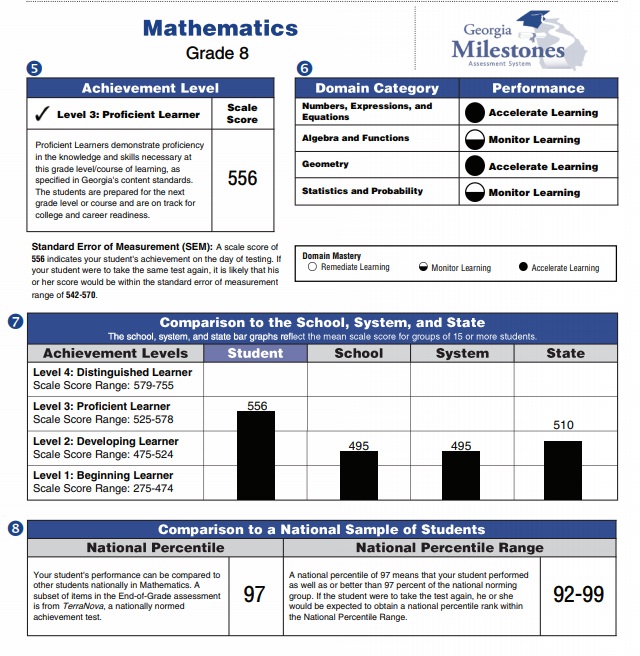
The GMAS report for math is similar to ELA but does not have the lexile information.
How to Use the Individual Student Report
The scores reported on the ISR keep students, teachers, and parents informed about how prepared the student is to move on to the next grade level. It’s important for teachers to use this data to determine how to best support a student’s learning in the classroom so that the student can reach proficiency in a subject in the future. Parents can also ask their student’s teacher about specific ways they can support their student’s learning at home.
Related Links
GMAS Practice test with sample questions and answer key
